This review was completed with a free copy of General’s Handbook 2023-24 provided to us by Games Workshop.
It’s been 6 months and as promised another General’s Handbook is upon us. Games Workshop experimented with a 6 month season and it doesn’t seem to have taken, because this one is going to last a full year. Additionally, everything in here is brand new. No recycled battleplans, battle tactics or grand strategies. We’re starting from scratch here. Which means lots of exciting new tactics and strategies to play around with.
This season takes us to the icy northern reaches of Ghur, Andtor. A land of seemingly infinite ice and snow, but buried under the ice are incredibly powerful arcane leylines that will amplify the wizards who walk across the frozen tundra. Fittingly, this season is all about wizards, though there are some tricks here for those who scoff at such cowardly tactics as well.
Realm Rules
Let’s get this out of the way first: Short of a Battlescroll update, there is no attacking in ranks anymore, and your foot heroes are again exposed to shooting danger. This is going to drastically shift things as many have probably gotten quite used to the bonuses. This does mean certain large base models are going to be significantly less powerful, and you will need to be doubly careful with your foot heroes.
Ellarr: These changes alone already will send ripples through the landscape of competitive play – Gitz support heroes and Fyreslayers players in particular are suddenly in a far worse spot.

Special Rules
One with the Land
Similar to last season, all non-Unique wizards with less than 10 wounds gain a keyword, Andtorian Locus which doesn’t do anything on it’s own but interlinks with several other rules in the battlepack.
Optimal Focus
At the start of the round, after determining who goes first, whoever is going to go second gets to pick one of their Heroes. If that hero is an Andtorian Locus, they can cast an extra spell and attempt 1 extra unbind that round. If they are not one, they gain an extra CP only they can use, similar to the Heroic Leadership rule but doesn’t go away at the end of the turn.
Either bonus is quite good. Whether it’s good enough to choose to go second after the first round is debatable, but if your position is solid you might just be OK handing off the double turn to have more ways to disrupt your opponent before kicking back.
Primal Magic
Ok strap in, this is the “big thing” for this season and it’s a long one. Every Hero phase, both player roll a die and for each 4+ both players get a Primal Magic Dice. Whenever you make a casting, unbinding or dispelling roll you may use up one of your primal dice by rolling them and adding them to the roll, and you may continue adding Primal dice until you are satisfied or use them all up. This works extremely in your favor because you get to roll your normal dice first then decide if you need to add a primal magic dice to push up the casting value or even just to make sure you get it off at all. Notably this is not limited to Andtorian Loci, so you can tack these dice onto spells from big time casters like Thanquol or Arkhan should you so wish. This also benefits non-caster armies like the Duardin, Sons of Behemat or Khorne because they still get primal dice, and can use it on their own unbinds, and they don’t need to keep any in reserve for casting later like those magic armies may have to.
It does come with a few caveats. They go away at the end of the round like command points, so use em’ or lose em’. You also cannot use a primal die in combination with any abilities that allow you to reroll the roll, which is a fair enough rule. The scary clause to all of this is the Primal Miscast, if you use primal dice and two of your dice are 1s, instead of a normal miscast the Wizard takes D3+3 Mortals and deals D3 mortals to every unit within 3”. So you have a pretty good chance of killing your wizard outright if you do this wrong.
As for the rule itself, this is great. I love it. There’s going to be a seriously smart metagame surrounding baiting your opponent to use their primal dice before going all in on your big spell. Since Primal Dice are handed out equally to both players (with some exceptions which we’ll go into below) you both have the same resources, can you win the game of chicken and get your opponent to blow all of theirs before you? If you rolled a 1 and a 6 and need to boost the spell just a bit more to guarantee it goes off, do you risk the 1 in 6 chance of getting a second one? You’re not a coward, are you?
Ellarr: Suddenly there is a game within the game, as choosing how and when to use your primal dice is an enticing opportunity for skill expression. Armies that don’t actually care about casting their own spells, but have incidental unbinds benefit from these dice too, as they can basically dump their dice into unbinds to gain an edge that way. It’s a smart gameplay mechanic that players will learn quickly thanks to it being an interactive mechanic in both hero phases. This isn’t a barely relevant command ability or heroic action – it’s front and centre.
Nullstone Adornments (Unique Enhancements)
Games Workshop didn’t completely forget the fact that 4 of their armies don’t have native wizards, or that some of the ones that do have mediocre spell lores not worth bringing. So these unique enhancements can only be taken if your list has no Wizards or units that can cast like Wizards (e.g. the Glowy Lantern in Sons of Behemat). These are unique Enhancements so they do not take up an artefact slot but they have a special qualifier that you cannot give these to someone who holds an artefact.
First the Hand-Carved Nullstone is probably the most consistent and “Safe” choice of the bunch, allowing the bearer unbind or dispel as if they were a Wizard. If they successfully unbind or dispel they can unbind (but not dispel) another, allowing them to chain unbinds until they fail to do so. This is where your primal dice come in, since you’re not using them to cast you actually have a bit of an advantage since you can bank them to go all in on unbinds and not worry about saving them for your own spells.
The second artefact Pouch of Nullstone is probably my favorite, but has a lot more big bet “all-in” energy to it. Once per game the bearer can activate this and all enemy wizards will miscast on doubles of 1, 2 or 3 instead of just double 1s. If they use their primal dice, those count as Primal Miscasts too. That’s just scary enough it might not be worth the risk to even try unless the spell is very important. As a side bonus, you can also dispel every endless spell on the field on a 5+, rolling for each. Not great, and more of a perk of the main purpose.
The last one, Polished Nullstone Pebble is simply too niche to be interesting. If the bearer is targeted by an endless spell, on a 4+ the caster must pick a different unit within 3” of the target, or if there are no other targets the spell simply does nothing. Many lists won’t even carry endless spells and the placement you’d need to set up to actually redirect the spell toward the enemy would be impractical at best. Even after all that, it’s still only a 50-50 chance it works. Pass.
Lore of the Primal Frost (Realmsphere Magic)
One of the most exciting parts of this book is the spells. Capitalizing on the Primal spell dice, Games Workshop went for some big spells here, high casting value but big effects. Andtorian Locus casters can pick one of these instead of their normal spells.
Hoarfrost has a casting Value of 8 and a range of 12”. Pick a unit wholly within range and roll a D3, you may then choose a melee attack on that unit’s warscroll and change either the hit, wound or rend to whatever you rolled. Crazy good, probably going to find its way on to every list that can fit it in. If you get a 3, change the Rend. If you get a 1, change the hit or wound. 2 is variable depending on which would be better for you. Absurdly flexible and opens you up for Rend -4 or even -5 with other stacking buffs.
Rupture is the weak spot here, casting Value 10 and a range of 18”. Instantly turns a predatory endless spell or Incarnate wild. I get what they were going for but even outside of the niche use case this will have, its generally not a desirable outcome. You usually do not want Endless spells to go wild because they will still hurt you as much as they hurt your opponent and you definitely don’t want an opponent’s Incarnate going wild outside of situations where your opponent foolishly left their own units too close. The incarnate isn’t that hard for your opponent to keep control of, even wild, and gets a free +1 to hit. Add the high casting value and this is just an absolute dud.
Ellarr: I’m a little higher on this spell, as some builds *want* to make their own Incarnate wild for run and charge and an innate +1 to hit, so having access to a method that doesn’t involve trying to intentionally kill the wizard it’s bound to is nice. For most players you’ll never pick this in army construction though.
Big Timmy energy on the last one, Merciless Blizzard. Casting Value 12, Range 12”. Pick an enemy unit and deal 4D6 Mortal wounds to them, but any 1s on the damage deal D3 mortals back to the caster. Ever wanted to cast Meteor from Final Fantasy in Age of Sigmar? Here you go. Potentially high (but variable) damage with a high cost, and potentially kills you. This is the kind of chaotic energy I love and while you probably need to really work to set this one up it has the chance to instantly obliterate a unit from the field.
Ellarr: I love this spell so much – basically unplayable for most armies but if you have access to teleports or out of phase movement shenanigans to position this it could be a game winning play. Is it good? Ehhh.

Command Traits
A set of 4 Command Traits locked to Andtorian Locus heroes only. These are a real mixed bag but how good they are is going to depend on your book’s own choices.
Shaman of the Chilled Land – Want to bring Merciless Blizzard but you know in your heart Hoarfrost is the better take? Worry no more and get both. Your General knows the entire Lore of the Primal Frost.
Eye of the Blizzard – At the start of your Hero phase roll a die and on a 5+ gain a primal magic die. Kinda eh, since that’ll usually result in only one or two primal dice per game but if you get it on a pivotal turn it’s a huge resource advantage.
Chilled to the Bone – Once per battle you can undo a miscast on a 3+. Pretty good, honestly. Miscasts can be bad news, especially primal Miscasts which can immediately gib your wizard. I’m pretty sure it would allow you to potentially pass the spell if you hit the casting value with your primal die, and keep casting if you have extra spells since it says it undoes the effects of the miscast.
Eater of Magic – On a successful unbind, the general can roll a die and on a 5+, the wizard who tried to cast that spell forgets it. Good stuff, even if a 5+ is iffy, if it works on a lynchpin spell it can disrupt your opponent’s entire game. Possibly worth the gambit.
Core Battalions
Two Battalions this time, both potentially good. Are they better than one drop? Eh…probably not.
Andtorian Acolytes – 2 mandatory champions (Leader with less than 10 wounds, no mount and not unique), one additional champion permitted. While it doesn’t mandate these be Andtorian Loci, the battalion does nothing if you don’t. If you have 2 Andtorian Loci in the battalion, you get an additional Primal Spell die on a 3+, at the start of both player’s hero phase. A 3+ is pretty reliable and if you’re a heavy caster army you may have the heroes to set aside in this to go for the bonus dice you really want.
Wizard Finders of Andtor – Mandatory Champion and Troop, optional additional Troop and Monster. When in combat with a Wizard, each unit in this battalion can gain +1 attack to one of their weapons but must target a Wizard. It’s fine, probably going to be feast or famine, depending on match up. Worth considering for the players who prefer to go for the Warlord battalion for extra enhancements and need somewhere to dump the rest of their stuff.
Grand Strategies
The grand strategies got even more difficult this season. “Take What’s Theirs” used to be pretty reliable if you were winning anyway, but they cleared out all the old ones to make room for the new.
Control the Nexus – Have 2 or more friendly wizards within 6” of the center of the battlefield at the end of the game. Basically a slam dunk for Lumineth or Tzeentch, everyone else runs in a gradient based on list composition. If you only have 2 wizards this is obviously doable, but your opponent will gun for your wizards immediately to disrupt you so bring some bodyguards or some way to negate wounds and heal damage.
Spellcasting Savant – Your general must be an Andtorian Locus and survive the battle. Arguably the easiest here but also the ones with the highest risk since your opponent only needs to focus on one target and likely will sacrifice everything to get to them. Have a plan to keep them protected from as much damage as possible.
Slaughter of Sorcery – No Wizards are left alive, not even your own. This is clearly intended for the Khorne, Kharadron Overlords, Fyreslayers and Sons of Behemat players who can’t bring a wizard if they wanted to, but maybe also could work in armies that don’t mind throwing their single wizard to the wolves once all is said and done. A fine choice, gun for their wizards and make them regret it, which you’re probably doing anyway with these sorts of armies.
Barren Icescape – Destroy all enemy units with Artefacts of Power and make sure there are no enemy units within 6″ of the center. Either one of these would be fine on their own as a Grand Strategy, combined it is…odd. That is a lot of scenarios to account for and probably a bit too risky.
Overshadow – Destroy all enemy battleline and have at least one of your own battleline alive. This one is match up dependent which makes it harder to recommend. You may fight a list with only basic battleline or you may fight a list that is practically nothing but. Given the frequency of armies that can create conditional battlelines that may occupy their whole list, maybe don’t do this.
Magic Made Manifest – Control 2 or more Endless Spells or Incarnates in any combination at battles end. If you have a plan, this can be great. If you bring the Incarnate that’s half the job done, you only need to get one endless spell out there and with primal dice you can put all your effort into casting it on the last round (go second, just to be safe). The incarnate must be under your control so keep its controller protected and don’t go too crazy with the incarnate. Once it’s locked into battle it can’t get out until it kills its target, so make sure it’s target can’t kill it.
Battle Tactics
Each season the Battle Tactics have gotten progressively more difficult and this may be the most difficult batch yet. I think they may have gone a little too hard on this one and your average player may not be able to score even the majority of their tactics, unless their book ones are great.
Intimidate the Invaders – By the end of the turn have more friendly units wholly outside your territory than in. Depending on the mission this will probably be an “opener” for people who go first round 1 since it’s non interactive and if your deployment has a lot of room to work with you can easily get more than half your army outside your deployment turn 1 and not sacrifice too much of your strategy.
Reprisal – Destroy an enemy unit that that destroyed a friendly general last turn. This is like a much harder Eye for an Eye, and may be a good late game gambit when youre down on options to make you general a juicy target so they are killed and you can strike back next round. Also worth noting is that it says a general and not chosen, so if you have a Warmaster who was taken down, that counts too.
Endless Expropriation – Pick an enemy unit who is bound to an Endless Spell or Incarnate. You succeed if the unit is killed or, the endless spell or incarnate is under your control, or they’re wild. Obviously this takes out the most obvious method of unbinding the endless spell, so in most cases you’re just going to try and gun for the unit that controls it, and you probably know if you can do this. If you’re Seraphon, Tzeentch or took Rupture as a spell, you do have that option open to you as well.
Magical Dominance – A friendly wizard needs to successfully cast a spell and all other spells are not unbound. This will likely be the best “opener” in the mission pack as it’s very easy to set up, just put a wizard as far from the enemy as possible and get a spell off, then stop. It doesn’t say spells that fail count against you, so if you’re out of unbinding range then try for it, but don’t risk it any further than that. Get that bag and quit while you’re ahead.
Magical Mayhem – Pick an enemy unit and kill them with a spell or endless spell. For armies with lots of mortal wounds this is going to be relatively easy, pick something on its last legs and blast it. Even the humble Arcane Bolt can do the job if they got one wound left.
Bait and Trap – Fall back with 2 friendly units and charge with 2 different ones. If your army has retreat and charge this is big gains. Yes, you have to charge with 2 other units, but charging back in with the units will keep you from losing ground. Everyone else, know when to have your guys clock out and send in the next wave of fresh troops. If you have enough good melee troops this can be a great low tress option that does what you wanted to do anyway.
Lead into the Maelstrom – Successfully make a charge move with a hero and battleline unit, and end the combat with at least one of those units in combat at the end of battle. This doesn’t say it has to be the same unit, and only one needs to remain in combat so if you have a decent combat hero this is pretty easy to do. Just pick something you’re relatively certain you can’t totally kill (but can’t kill you) and charge in.
Surround and Destroy – Pick 3 friendly unit and by the end of the turn all 3 needs to be within 6″ of the edge and at least 2 outside your territory. Much like Intimidate above, this can be a pretty good opener depending on deployment. They don’t even need to be on the same board edge, granting a fair amount of flexibility.
Ellarr: I love this set of battle tactics but I hate the environment it’s being released into. Some books (especially the older ones) are going to struggle to score as many as more recent/powerful books, as the difficulty of these puts a real premium on achievable battle tactics within an armies battletome. Stormcast & Orruk Warclans in particular suffer massively here thanks to a very poor set to choose from thanks to design issues (Stormcast have theirs split between cities allies, Orruks have to share 6 battle tactics between 4 armies to disastrous results).
The game badly needs a balance pass on Battletome battle tactics, or it’s going to get ugly very fast for some of the armies on the lower end of the power scale.
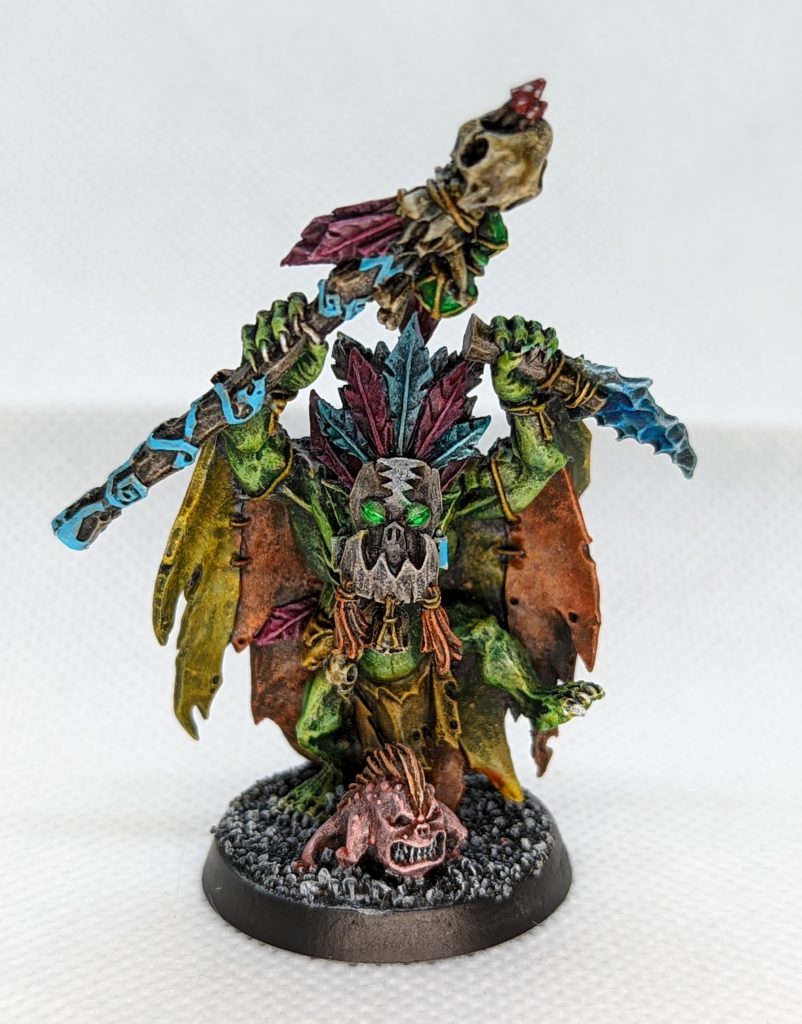
Battleplans
12 brand new battleplans, nothing returns this season. The batch of missions is all really good as well, avoiding the trap of a Knife to the Heart esque “instant win” mission.
For those who may not be as familiar, when I say “Standard Scoring” most missions in Age of Sigmar score like so:
- One Point for Holding one point
- One Point for Holding a second Point
- One Point for holding more than your opponent
- Two Points for achieving your battle tactic this turn.
These are cumulative, which tends to mean in most cases you’ll be trying to score 5 points each turn. If I say a mission has “Standard Scoring” this is what it means, and I will specifically call out missions that work differently.
Geomantic Pulse
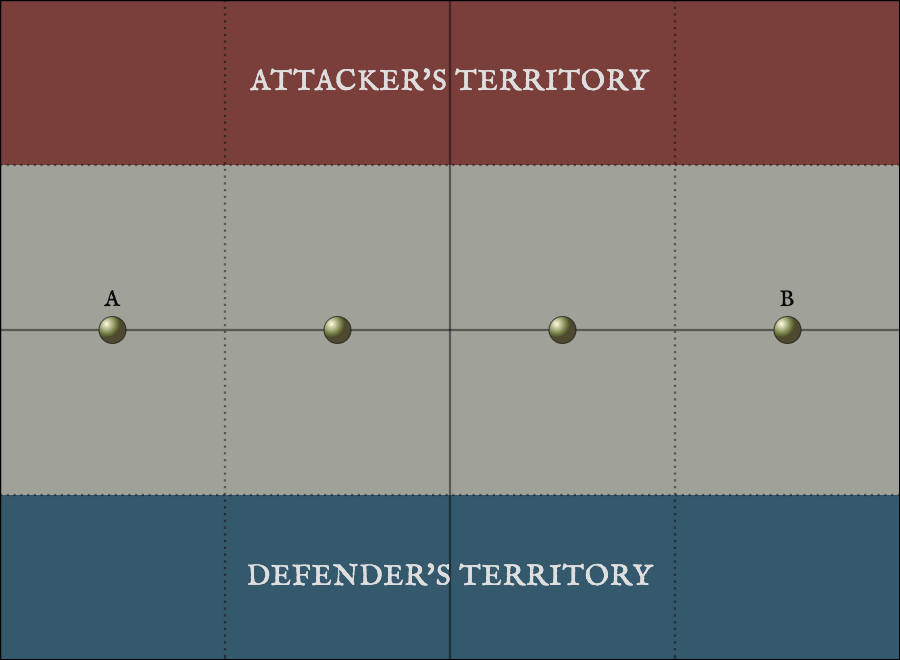
There are 4 objectives on the field and at the start of Round 2 the player who is going second gets to choose the far left or far right objective to become the Pulse. Then each turn the Pulse moves one space over toward the other side of the field. Scoring is different than usual, instead of Hold 1, 2 and more scoring and works like this:
- 1 point for holding at least an objective
- 2 Points for holding the pulse
- 1 Point for each adjacent point to the pulse
- 2 for a battle tactic, as usual.
Since there is no pulse on round 1, you need to anticipate where it could pop up next round and be prepared to be flexible, as capturing the pulse (and adjacent nodes) will become crucial to the strategy. If you can get second round 2 that’s going to have an overwhelming power to control the game, so you may want to go second first round to not get doubled going into it.
Nexus Collapse
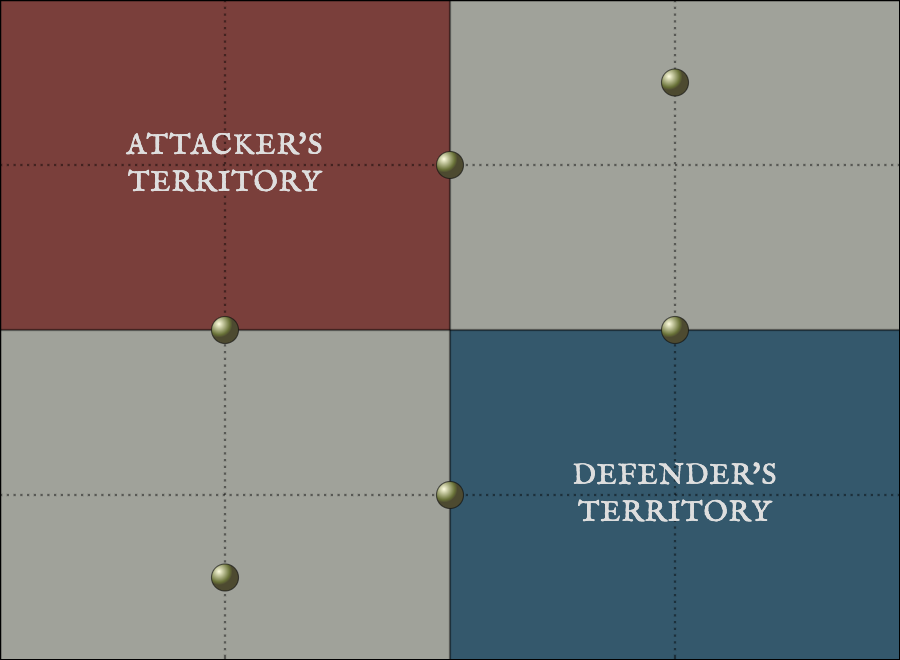
The brand new Jaws of Gallet, even deadlier before. Each round after the first, whoever has the lower score gets to choose an objective to collapse (if you’re tied, roll off instead). All units sitting on that objective take D3 mortals on a 4+, and then the objective is pulled. So maybe don’t castle too hard on one objective and spread out a little instead. Otherwise scoring is standard one, two and more.
The decision to change the decision for which objective collapses to whomever is behind in points is definitely an interesting one and adds a rubber banding mechanic to let the losing player catch up.
Lines of Communication

In this mission both players need to contend with Disruption. Whoever is going second gets to choose a phase and if their opponent attempts to spend a command point during that phase, they roll a die and on a 3+ they must spend 2. If they elect not to spend that that second CP, the original CP is lost and nothing happens.
I’m not wild on this, I feel like they could have settled for refunding the CP if the player elected to not spend 2, it’s going to make especially fighting against Lumineth hellish with Total Eclipse (although you can give them a taste of their own medicine if you’re going second…). If you’re going first and it’s the phase your opponent chose, just assume anything you order will cast 2 and plan accordingly.
Otherwise, scoring is standard one, two, more and a battle tactic.
Every Step is Forward

Standard scoring. With the Give No Ground rule in place, if a unit charges they count as one additional model for each model on the point. If a unit makes a retreat, they count as 0 models. Naturally this encourages a more aggressive playstyle which Ork and Beastclaw Raiders players are going to love as they finally get one up on more passive opponents who hold back.
Limited Resources
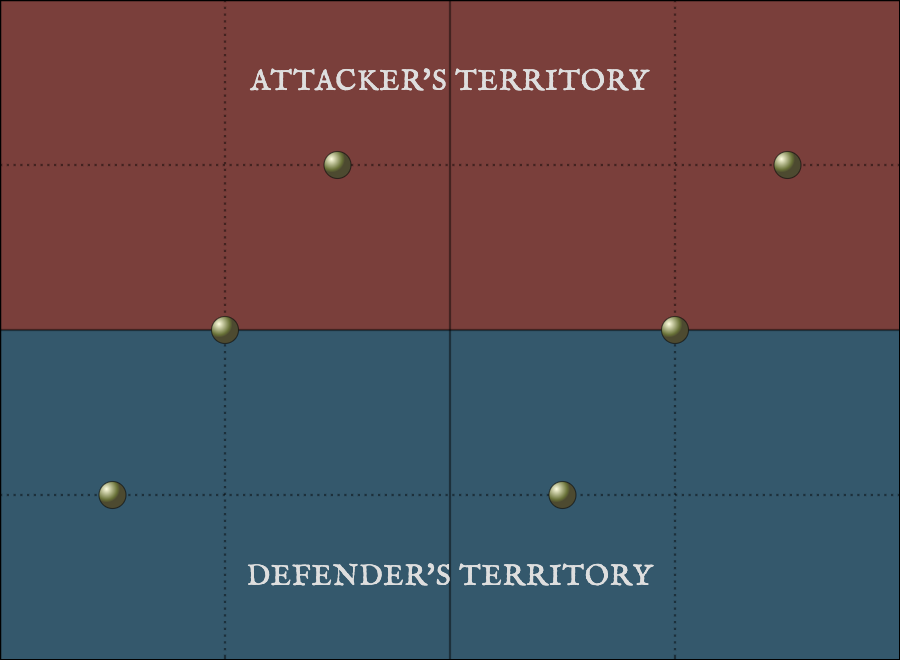
6 objectives, standard scoring but with a twist. Each turn your army is trying to Siphon Meltwater and after holding an objective for two consecutive turns the objective is drained dry and they cannot hold that objective again for the rest of the game. They may attempt to contest it to block their opponent, but will never again be able to claim control over it.
This mission opens up a lot of possible options to victory. If you try and hold too many objectives you can end up depleting 4 objectives after 2 rounds and be unable to score more after that. However, Meltwater is only drained when you hold it for two consecutive turns. So if you move off an objective for a turn and come back it is “refreshed”. This means you can play a longer game of letting your opponent spend their resources and then strike when theyre drained dry on 3-4 of the objectives. Or play merry go round and keep your army moving so they don’t hold the same objective for too long.
Spring The Trap

Standard Scoring. After setup, D3 (roll once for both players, so it’s always fair) units get Outflank and can come in on the second or third round at the end of the movement phase within 6″ of the edge and more than 9″ of the enemy. Do you put your big slow anvils off to the side to grab the side objectives, tantalizingly close to the edge, or do you keep everything in so you can grab those objectives first and keep them out?
Fountains of Frost
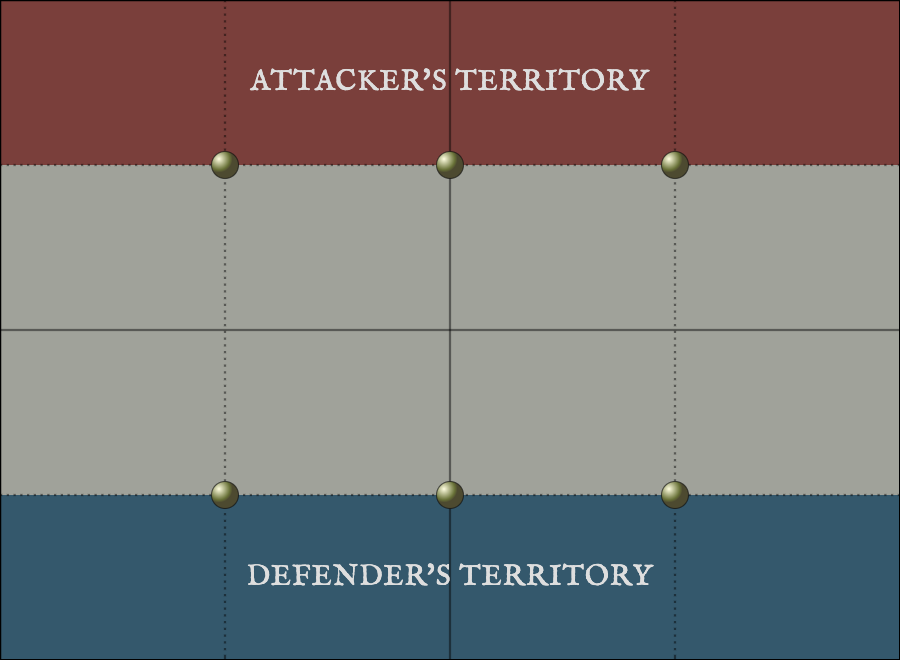
Standard scoring, and that’s a lot of objectives. Each objective is a Geyser of Primal Magic, which makes it so Andtorian Locus units count as 10 models on the objective! However, this comes with a catch. If 3 or more units are on an objective, it erupts at the start of the battleshock phase, doing D3 mortals to each unit on there on a 4+. So you’re encouraged to try and spread out and don’t put too much onto one point lest it take out your own guys. Or maybe you see 2 enemy units on a point and can go for the gamble and try and do more damage to them than it does to you.
The Icefields

Standard scoring. The Ice-Encrusted Domain makes running harder, so units take D3 mortals if they run and if they charge, take D3 for each 1 on the dice. It’s an…odd rule given how the objectives are so close together it’s likely to result in a skirmish in the middle before too long and sometimes well, you gotta charge. But maybe not everyone needs to run on Round 1.
Power Flux

One of the most chaotic missions in the pack, earning its name handedly. Each round whoever is going second chooses which pair of objectives activates, A or B. Scoring then works like so:
- Score 1 if you control at least one activated objective.
- Score 1 if you control both activated objectives.
- Score 1 for each objective held by an Andtorian Locus hero.
- Score 1 for killing an enemy Wizard that turn
- Score 2 for battle tactics
The presently inactivate objectives do nothing. So there are a lot of ways to score here and those with lots of Andtorian Loci have more ways to score higher, while also opening themselves up to being scored on if they’re too reckless trying to capture them.
It’s not likely you’ll get every point every turn, and it probably isn’t wise to do so.
The Frigid Zephyr
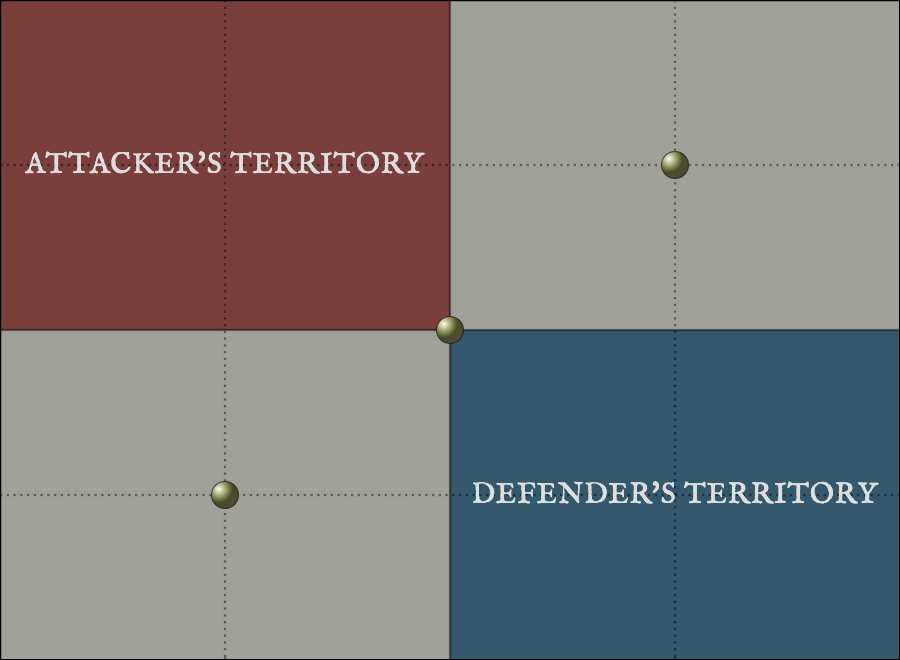
Standard Scoring. In this mission, the Ferocious Squall rule keeps both armies from seeing each other, and they cannot target each other if more than 12” away. At the start of each round after players have decided who goes first, a die is rolled adding the battle round to the number and on a 7+ the blizzard clears away. So there is a remote chance that the blizzard clears on turn 1, but the chance increases over time.
Worth noting is the wording that the units can see each other if they are within 12”, and not models. So as long as one model gets in range, the entire unit can shoot. So don’t get too close to enemy ranged units, or take it into account if you want to unleash a barrage of your own.
No Reward Without Risk
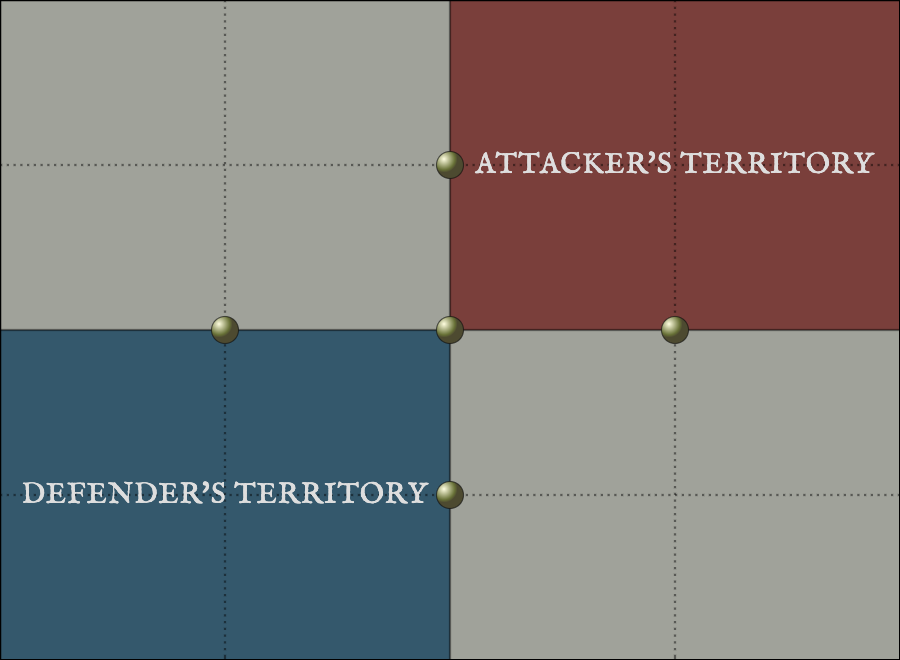
This mission has standard scoring, the unique gimmick is Feedback Overload, anytime a wizard is killed, on a 4+ they deal D3 mortal wounds to each unit within a number of inches equal to their wound characteristic. The wording seems to imply you roll the 4+ once and then D3 for each unit, and this would be a wild opportunity on something like Archaon or one of the Mortarchs.
Towers in the Tundra
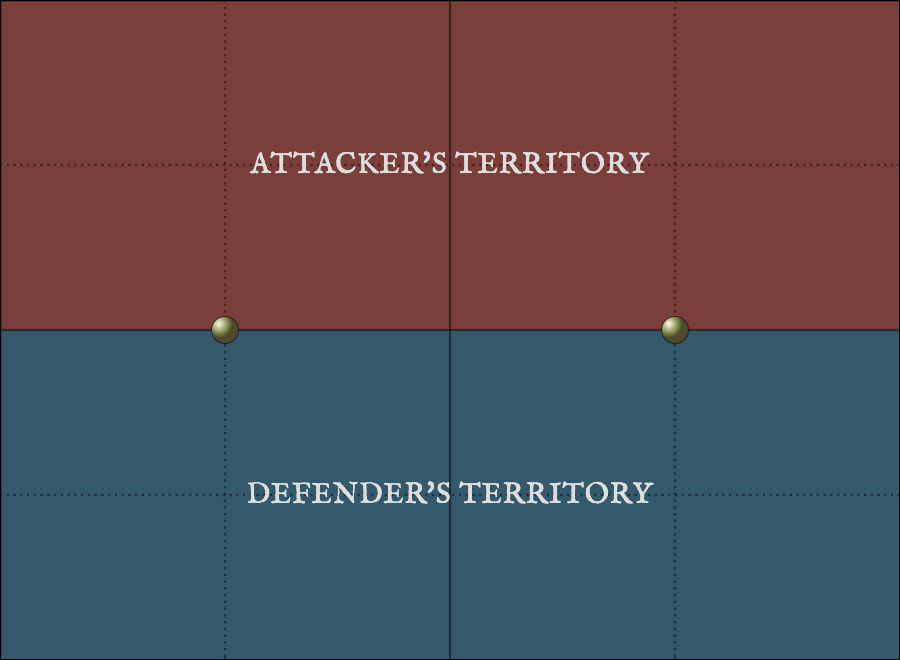
At first I wasn’t too crazy about this mission but I came around once I saw that steps were taken to make sure the gimmick worked as intended. The rules of this mission state that each player picks a defensible or faction terrain feature wholly within their territory. These become a “Wizard’s tower” which grant the Arcane trait (+1 to all spell rolls). There is some sanity checks in place here, because a specific rule is given that the defender must set up a Defensible terrain feature in both deployments, if you don’t have one, make one into one.
While you might be tempted to make your massive bone-tithe nexus a wizard tower you probably shouldn’t do that because scoring is very different from most missions. There are only 2 objectives, so you get:
- 1 Point for each objective you hold
- 2 for a battle tactic
- 2 Points for garrisoning inside of your wizard’s tower. For bigger armies, there is a check here that if your army could not garrison inside a terrain feature, you just need to control it. The issue is this puts it in the hands of the units, not the terrain. So if you simply did not choose the Defensible terrain feature as your Tower, you will not get points for this because you do have a unit that can go inside a defensible terrain feature.
- Finally, you get 2 if your opponent isn’t garrisoning inside their own tower. This one does not include the exception about if you could garrison inside, so if you’re fighting Sons of Behemat it’s an auto 2 points each turn. Bummer for them. Otherwise your goal is to drag them kicking and screaming out of there.
Ellarr: this one does need an FAQ as there’s some shenanigans with faction terrain in the core rules being picked as your Wizards Tower, but we expect that’ll get picked up and addressed quickly.
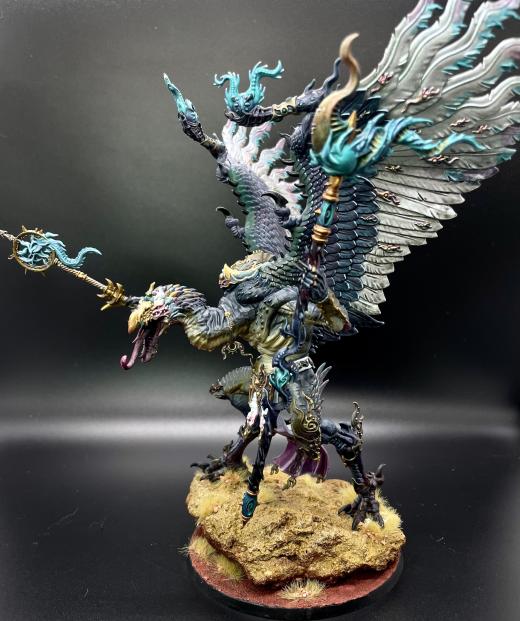
Endless Spells
Like previous General’s Handbooks the endless spells are printed for posterity, most actually got an update, so we’re going to focus on those. If it’s not here, it’s exactly the same as before, though the points may have changed.
Aethervoid Pendulum
It now can swing in either direction, and does D6 mortals instead of D3. Does this make it worth it? Absolutely not. The value this in second edition was that you had some control over where it went, in a time when Endless Spell movement was at the whim of whoever’s turn it was. Now that you have full control over your endless spells, you don’t need something with such a constrained movement. You want to do a bunch of mortal wounds? Ravenak’s Gnashing Jaws in the same damn box.
Ellarr: I’m a little more bullish on this one but that’s dependent on it being real cheap.
Burning Head
In order to distinguish it as more than just “the cheapest Mortal Wounds Endless Spell” they made this thing pretty esoteric.
After movement, it may latch onto an enemy unit on a 2+, it then proceeds to follow them around like an annoying younger sibling. It becomes part of the unit and does D3 mortals to that unit at the end of each movement phase on a 2+ until the unit is dead or it is dispelled. The way it is written seems to imply that the model does not need to obey the usual coherency rules, so you can’t pull models just to get it out of coherency as the spell itself functions as a marker to mark which unit it is a part of. It’s an interesting idea, it basically inflicts a Damage over Time spell on the unit until they get rid of it.
Chronomatic Cogs
The reroll charges effect for speeding up time remains, but the slow down time effect has been rewritten for what feels like the 800th time. Now it lets a Wizard within 6” cast Arcane Bolt or Mystic Shield for free, without using a charge. This probably is going to kill it off yet again as Games Workshop seems to struggle to find the happy middle ground for it, but Seraphon and Tzeentch players may think its worth it just to get another spell off each round.
Geminids of Uhl-Ghyish
The edge use of these to block Redeploy and Unleash Hell has gotten a huge upgrade, now the affected unit cannot use any command abilities until the next Hero phase. This is massive, no All Out Attack, All Out Defence or Inspiring Presence is going to absolutely merc most units that get in touch with this. This is going to make it close to an auto-take and also will need to be unbound at all costs before it even hits the field.
Lauchon the Soulstealer
Changed it’s most prominent use, which was to transport Thanquol. Now the Wizard must have less than 10 wounds. Fair, but also means the spell is probably dead and Skaven win rates are about to drop big time.
Malevolent Maelstrom
The thrust of this spell works the same as before, put a counter next to it and whenever a spell is cast or a model dies within 12”, add to the counter. The detonation mechanic is very different however.
Instead of a 4+ to detonate it at 6 charges (which is what it intended with a rather awkward way of phrasing it), it instead automatically detonates at 6 charge, no dice required. You add 6 to the number of charges and each unit within that number of inches takes D3 mortals, and Wizards take a straight 3.
What makes it interesting is the way it is written that the detonation occurs “When it is removed from play” but does not specify how that happens. So it basically is daring your opponent to dispel it, causing the bomb to go off. Interesting technically but still a lot of set up just to do a few Mortal wounds.
Prismatic Palisade
Range has been extended to 18”, and to compensate it now only stops shooting attacks on a 3+ instead of automatically. Possibly interesting with the increase range it gets a bit closer to doing its job, especially against something like KO
Soulscream Bridge
This one took a pretty big hit. First, it’s range was shortened from 24” to 18”. Second, units that travel through it cannot receive commands until the start of your next hero phase. I’m not willing to say it’ll kill it but it drastically reduces its value. The 18” range could be compensated for, but not getting commands is brutal. If you don’t get the double the unit is liable to be open to a counter attack so you better make sure there’s nothing close enough to kick back and hit them.
Soulsnare Shackles
Honestly a lot better, it was pretty good before but required some technical knowledge to set up properly. Now every unit who starts within 6” of one of the shackles during the movement phase reduces movement by D6, and if it’s reduced to 0 they take D3 mortals at the end of the phase. Definitely a more practical debuff and an absolute headache for slower armies.
Suffocating Gravetide
Moves 12” now and deals mortals on a 5+ instead of a 6+. Basically doubles the damage output and makes it easier to clear big units (which is what its supposed to be doing). It’s still likely going to suffer in the face of the versatility of Ravenak’s Gnashing Jaws, but its a silver bullet for hordes.
Shards of Vallaghar
The thrust of this ability remains the same, but its been made less annoying to set up. Now just being within 6” of either of these turns off fly and teleport, no need to fiddle with weird movement to create the perfect line to hit multiple units. It no longer halves movement but it does block teleports in which means it can pull double duty guarding objectives from teleports. Overall, positive change.
Umbral Spellportal
Mostly works the same with one major change: spells can now be unbound from the portal rather than the caster. This makes it a bit riskier to use in some edge cases for caster armies like Lumineth or Tzeentch trying to deploy in the far corner and cast a spell far further away than they should. Ultimately it just means that the opponent will have a chance to unbind it, which in the new season could make a big difference but you’ll probably still take your shot anyway.
Conclusion
RagnarokAngel: This is honestly the kind of crazy over the top shit I think Age of Sigmar has moved away from and I am so glad to see it coming back
Ellarr: I think the core set of battleplans and realm rules are great and they’ve done JUST enough to help non casting armies along that they won’t be left in the dust. I’m a bit disappointed the Battalions are a bit lacklustre as I think battle reg/warlord/command entourage still offer far better value in the listbuilding stage. I’ve already touched on the battle tactics but it needs emphasising – it cannot stay the way it is for twelve months without at least some effort made to address the balance in power of book battle tactics. I’m cautiously optimistic about the next year and excited to see this hit the scene!
Muggins: As a player who is getting more and more into competitive AOS, I’m glad to see another GHB drop that changes things up a bit. Not only does it change up the game, but it changes up the story, and that’s what we’ve been wanting for decades. I love it.
As a Beasts of Chaos player, I know goats are thinking that it’ll be tougher for our wizards now that the better spellcasting factions get primal magic dice. I still think there is a place for us, but it may require some careful play to keep our wizards alive (like ambushing them until turn 2) and the use of the Twistfray Cursebeast command trait. While I think Bestial Cunning is used a ton (for good reason) we might take a look at using Twistfray to get our spells off – especially seeing as now you can choose one wiz to cast an extra spell each turn. In addition, our cheaper wizard units mean we can take a few and do the Andtorian Acolytes battalion – giving us access to more primal magic dice.
I really like the catch-up mechanic in Nexus Collapse, and the Disruption special rule in Lines of Communication seems like it really could play havoc with a player’s plans. I’m not a huge fan of the small amount of record keeping involved in the Limited Resources scenario but I’ll deal with it. Some of the mortal wound special rules in the table 2 scenarios really bring you into the Andtor setting and it makes us feel like we’re all in a new area. The Frigid Zephyr has a really interesting special rule that limits LOS and flying – as a mostly foot / non-shooting player it’ll be fun to see the results from that one. If you’re playing No Reward Without Risk and you manage to kill Lord Kroak it’d be funny to see every unit within 18″ suffer D3 mortal wounds, even the Seraphon.
Overall I’m glad to see this new GHB bring new strats and ideas to the game. I’m really bummed to lose Galletian Veterans – it made my Gors on 32mm bases very respectable, throwing out a ton of attacks in two ranks. I hope that comes back or perhaps they make all 32mm base infantry have 2″ attacks.
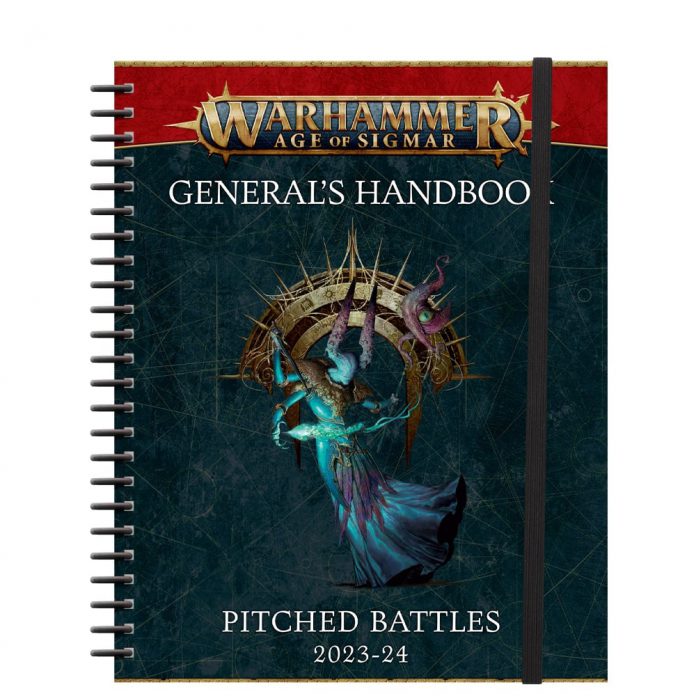


You must be logged in to post a comment.